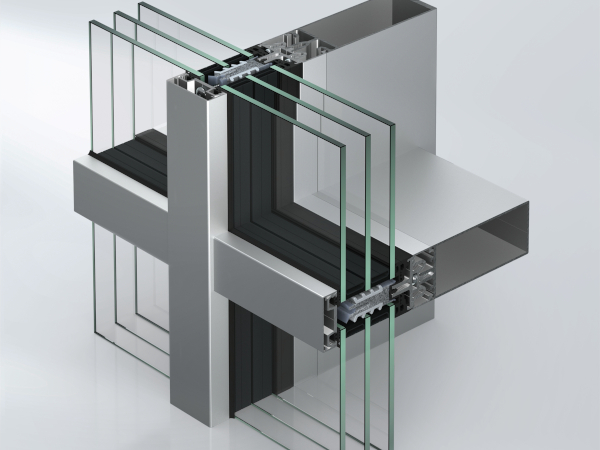Date: 14 April 2014
We have discussed a number of key issues within different trade journals, but a recent question caught the eye of Garry Smith, one of our Principal Consultants for Flat and Architectural Glass.
That is “Does the increased weight of a triple glazed product - and the associated handling risks for industry employees - make the possible performance increases, in terms of thermal and solar properties, worthwhile?”
Everyone should be concerned about the welfare of their staff when it comes to moving glass. The question has been raised about triple glazing posing additional risks. Are the risks commensurate with the benefits?
.jpg) Installation
Installation
First of all, installation needs to be considered. If the glazing is being installed in a new build, or a complete replacement of the frame as well as the IGU is being carried out, the thickness of the glazing can be re-specified depending upon the performance requirements. If it is a replacement of the IGU within an existing frame, typically accommodating an IGU of up to 28mm thickness in the UK, then there will be limitations on the performance that can be achieved.
Thermal and Solar Performance
When considering the performance benefits of triple glazing over double glazing the U value and solar factor (g value) should be considered. The U value of a building element is a heat transfer coefficient, i.e. how much heat is transmitted through the element. Elements with a lower U value will provide greater insulation and so retain heat.
The solar factor, or g value, is a measure of the transmittance of solar energy through an element, with a higher value indicating that more thermal energy is gained by the building through direct solar energy transmittance. In winter a higher g value is preferred for solar heating. Conversely, in summer, a lower g value will reduce excessive heating of the building.
It is possible to achieve a glass U value of approximately 1.2 W/m2.K and a g value of approximately 0.75, with argon filled double glazed units (DGUs), allowing windows to satisfy the requirements of current building regulations. Where greater insulation is required, there are two-pane insulating glass units (IGUs) that can achieve a U value of less than 1.0 W/m2.K.
If no limitations on unit thickness are imposed by the framing system into which the unit is being installed, an argon filled triple glazed unit (TGU) of three 4mm panes can achieve a U value of approximately 0.5 W/m2.K, with a g value of 0.5. This gives a 50% reduction on the U value, with only a 19% reduction on solar gain.
If there are limitations on the unit thickness, for example 28mm units as mentioned previously, then the achievable U value on the above TGU, with only 8mm gas spaces is 0.9 W/m2.K.
So, what about the weight?
The weight of glass is the primary factor to consider when looking at the weight of the unit. The most common thickness of glazing in domestic properties is 4mm, therefore, a typical DGU will weigh 20kg/m2. Comparatively, a TGU with 4mm nominal thickness glass will weigh 30kg/m2.
For domestic installers a typical unit might be 400x1200mm. In a two 4mm pane arrangement this would weigh 9.6 kg. A triple-glazed equivalent of three 4mm panes would weigh 14.4 kg. At some point an individual unit might exceed 25 kg and there is a limit on how many bodies can help with a lift. As the lifting problem is not new to the glazing industry, it may become necessary to provide better site handling equipment that has many benefits. Safer lifting with less physical effort, accurate placing of glass, more clearance between the operator and the glass panes all might result from gearing up for triple glazing.
Non-domestic glazing companies have been handling large thick glass units for years. A unit size 2500x4000mm in 10mm glass is not unusual and this would weigh 0.5 tonne.
Glass handling
The handling of glass has been a fundamental health and safety consideration for all glaziers and installers for many years. The weight, location and available access for any installation should be fundamental factors, noted as part of the quotation process and fully considered in risk assessment, in order to provide installers with the appropriate equipment for each job.
Equipment suppliers have also responded to the industry’s increased health and safety priorities and the requirements of the ever growing, and impressive, architectural glass displays and facades demanded by current designers and architecture. There are a whole stream of new handling products, including lifts for enclosed or limited spaces and even tools to allow units to be installed from within the building without the need for ladders, scaffolding or other access equipment.
An answer – or another question?
So, “is triple glazing unsafe to handle” is probably the wrong question to ask. Should it be “has the installation been appropriately surveyed and assessed in order to allow safe installation, regardless of glass weight”?
Supporting Tools
To help specifiers with these complex considerations, GTS has launched a number of free calculators on their recently launched website, www.glass-ts.com. A simple glass weight calculator, allowing for different glass configurations and types, is available at www.glass-ts.com/glass-weight-calculator; while an effective U value calculator – calculating the effective U value based upon a glazed unit’s location, orientation and stated U-and g-values - is available at www.glass-ts.com/effective-u-value-calculator.
GTS works across the glass supply industry both in the UK and internationally - providing analysis, consultancy, testing, quality assessment and research and development support across the glass, food and drink, construction, retail, medical, pharmaceutical, defence and biotech sectors.
For more information please see www.glass-ts.com, telephone +44 (0) 114 290 1801 or email enquiries@glass-ts.com.
Image Credit: Coprid / shutterstock.com















Add new comment